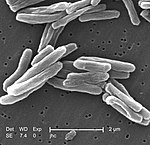Mycobacteria growth indicator tube

Mycobacteria Growth Indicator Tube (MGIT) is intended for the culture, detection and recovery of mycobacteria. The MGIT Mycobacteria Growth Indicator Tube contains 7 mL of modified Middlebrook 7H9 Broth base. The complete medium, with OADC enrichment and PANTA antibiotic mixture, is one of the most commonly used liquid media for the cultivation of mycobacteria.
All types of clinical specimens, pulmonary as well as extra-pulmonary (except blood and urine), can be processed for primary isolation in the MGIT tube using conventional methods. After processed specimen is inoculated, MGIT tube must be continuously monitored either manually or by automated instruments until positive or the end of the testing protocol.
Principles of the Procedure
A fluorescent compound is embedded in silicone on the bottom of 16 × 100 mm round bottom tubes. The fluorescent compound is sensitive to the presence of oxygen dissolved in the broth. Initially, the large amount of dissolved oxygen quenches emissions from the compound and little fluorescence can be detected. Later, actively respiring microorganisms consume the oxygen and allow the fluorescence to be detected.[citation needed]
Tubes are filled with samples in the broth and continuously
Instruments
BACTEC MGIT 960 System
This instrument is produced by
References
- ^ a b Siddiqi, Salman H.; Sabine Rüsch-Gerdes (2006). Procedure Manual For BACTEC MGIT 960 TB System.
- ^ "Use of BACTEC MGIT 960 for Recovery of Mycobacteria from Clinical Specimens: Multicenter Study" Enrico Tortoli, Paola Cichero, Claudio Piersimoni, M. Tullia Simonetti, Giampietro Gesu, and Domenico Nista Journal of Clinical Microbiology, November 1999, p. 3578-3582, Vol. 37, No. 11 [1]

